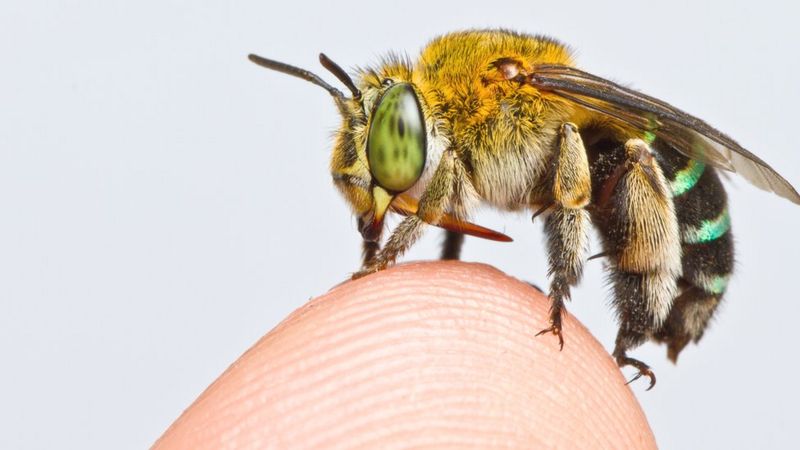

1. array (n)
a large group of things or people, especially one that is attractive or causes admiration or has been positioned in a particular way
2. diversity (n)
the fact of many different types of things or people being included in something; a range of different things or people
3. pollinate (v)
to take pollen from one plant or part of a plant to another so that new plant seeds can be produced
4. conservation (n)
the protection of plants and animals, natural areas, and interesting and important structures and buildings, especially from the damaging effects of human activity
5. sparse (adj)
small in numbers or amount, often spread over a large area
6. compiled (v)
to collect information from different places and arrange it in a book, report, or list
Global map of bees created in conservation first

Scientists have mapped the distribution of all 20,000 bee species on earth.
The new global map of bees will help in the conservation of the insects we rely on to pollinate our crops, say researchers in Singapore and China.
Bee populations are facing pressure from habitat loss and the use of pesticides. Yet little is known about the array of species living on every continent save Antarctica, ranging from tiny stingless bees to bees the size of a human thumb.
Bees provide essential services to our ecosystems and are the major pollinators of many of our staple foods, said Dr. Alice Hughes of the Chinese Academy of Sciences in Yunnan. Yet, until now, we have not had the data to show where on the planet most species are.
“Here we combine millions of records to create the first maps of global bee richness, and understand why we see these patterns,” she told BBC News.
“These maps, and our framework, can then form the basis of future work, enabling us to better understand patterns of bee richness and ensure that they are effectively conserved into the future.”
Some bee populations, such as bumblebees in Europe and North America, are well studied. But in other regions, such as large parts of Asia and Africa, documentation has been sparse.
While there remains a lot to learn about what drives bee diversity, the research team hopes their work will help in the conservation of bees as global pollinators.
To create their map, the researchers compared data about the occurrence of individual bee species with a checklist of over 20,000 species compiled by Dr Ascher. This gave a clearer picture of how the many species of bees are distributed around the world.
The study has confirmed that unlike other creatures, such as birds and mammals, more bee species are found in dry, temperate areas away from the poles than in tropical environments nearer the equator.
Resource: https://www.bbc.com/news/science-environment-55006902

- How valuable do you think bees are to nature?
- What do you think life is like as a bee?
- Do you think bees can become stressed out by visiting too many flowers?
If the bee disappeared off the face of the earth, man would only have four years left to live.
Maurice Maeterlinck






